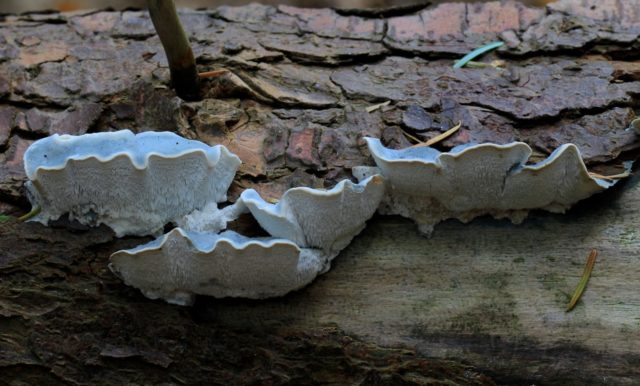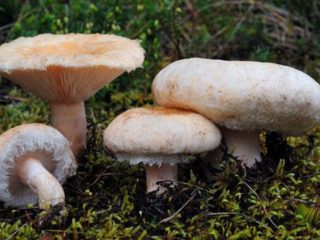Content
Postia blue-gray is a mushroom of the Fomitopsis family that mainly grows on dead coniferous trees. It is important to understand what it looks like, where you can see whether it is worth eating or not, what measures need to be taken in case of poisoning and how to provide first aid to the victim. Other names for Postia bluish-gray are Postia bluish-gray, Postia bluish-gray, Oligoporus bluish-gray.
Where do bluish-gray postias grow?
Postia bluish-gray is a family of mushrooms that grow on coniferous trees and larches. They can often be seen on dead wood, fallen branches and in the forest. Unlike other varieties, they cause a brown type of rot. They grow in summer and autumn from July to November on the following trees:
- willow;
- alder;
- hazel;
- beech;
- fir;
- spruce;
- larch.
They preferentially settle on dead trees and branches in groups. Unlike other plants and mushrooms, they have unusual characteristics.
What do bluish-gray posts look like?
Bluish-gray postia are mushrooms with caps and legs. The legs may be invisible, but they are definitely present. The cap has a half-shape and is fleshy and soft. It reaches a length of 3 to 6 cm. It often fuses with the stalk as it develops.
The mushrooms are white, the corners of the caps are colored blue, green or yellowish. If you squeeze the fruiting body too hard, the flesh will change color.
Immature species have a bristly edge. As it develops, the edges become exposed and the skin becomes smooth. The taste is fresh. The pulp smells pleasant, like a porcini mushroom or boletus. The structure under the cap is tubular, gray, blue or white, depending on maturity (color becomes brighter with age). The pores are angular and irregular in shape. The hymenophores are long, the surface is jagged with uneven edges, and has a pleasant mushroom aroma.
Is it possible to eat bluish-gray postia?
Postia are mushrooms that many reference books classify as inedible. However, they do not contain toxic or poisonous substances. The flesh is tough and if cooked correctly the mushrooms may not be dangerous. But experienced mushroom pickers do not recommend risking your health and advise completely abstaining from consumption.
How to distinguish bluish-gray postia
There are three types of postia: astringent, bluish-gray and flat polypores. The binders have large white caps. An important feature is a large accumulation of water and bubbles on the surface, “crying”. They are similar in appearance to Aurantioporus fissurata from the Boletaceae family, but they have a more rounded and elongated shape. Compared to other types, mushrooms of this type have a softer structure, a sharp and rich mushroom aroma. The astringent variety can often be seen on apple and aspen trees. Forms on fallen branches and causes rot.
The flat tinder fungus is a white mushroom with a bulging, grooved cap. Like other species, it loves wood, in particular larch. Unlike postia, it has no legs and a bluish tint. It also causes white rot on plants. It does not grow in October and April.
Postia bluish-gray is a mushroom with a stalk, a half-shaped cap, soft flesh and blue spots. A young mushroom has a lowered cap, older specimens have a rounded one. The color even approaches green and yellow.
Symptoms of poisoning
Like all inedible and semi-edible mushrooms, postia with bluish and gray tints can cause severe poisoning with nausea and vomiting. Symptoms include dizziness, pain in the temples, and weakness. In some cases, a high temperature and a severe allergic reaction may occur in the form of redness, peeling of the skin and burns of the mucous membrane. Death is possible in children under 5 years of age if consumed in large quantities.
First aid for poisoning
In case of poisoning, you must call an ambulance or go to the hospital yourself. Before the doctor arrives, you need to go to bed and perform gastric lavage by drinking plenty of fluids and inducing vomiting or a laxative with an enema. You should also stop taking other medications to avoid overdose until medical intervention. So that the doctor can clarify the diagnosis upon arrival, all mushrooms must be preserved. Only in this case is a quick cure possible.
Conclusion
Postia bluish-gray is an inedible mushroom with a hard structure. The mushroom has a beautiful relief surface with a blue border and grows on coniferous trees in forest belts. It differs from other mushrooms in its unusual color and the presence of a small stalk.













